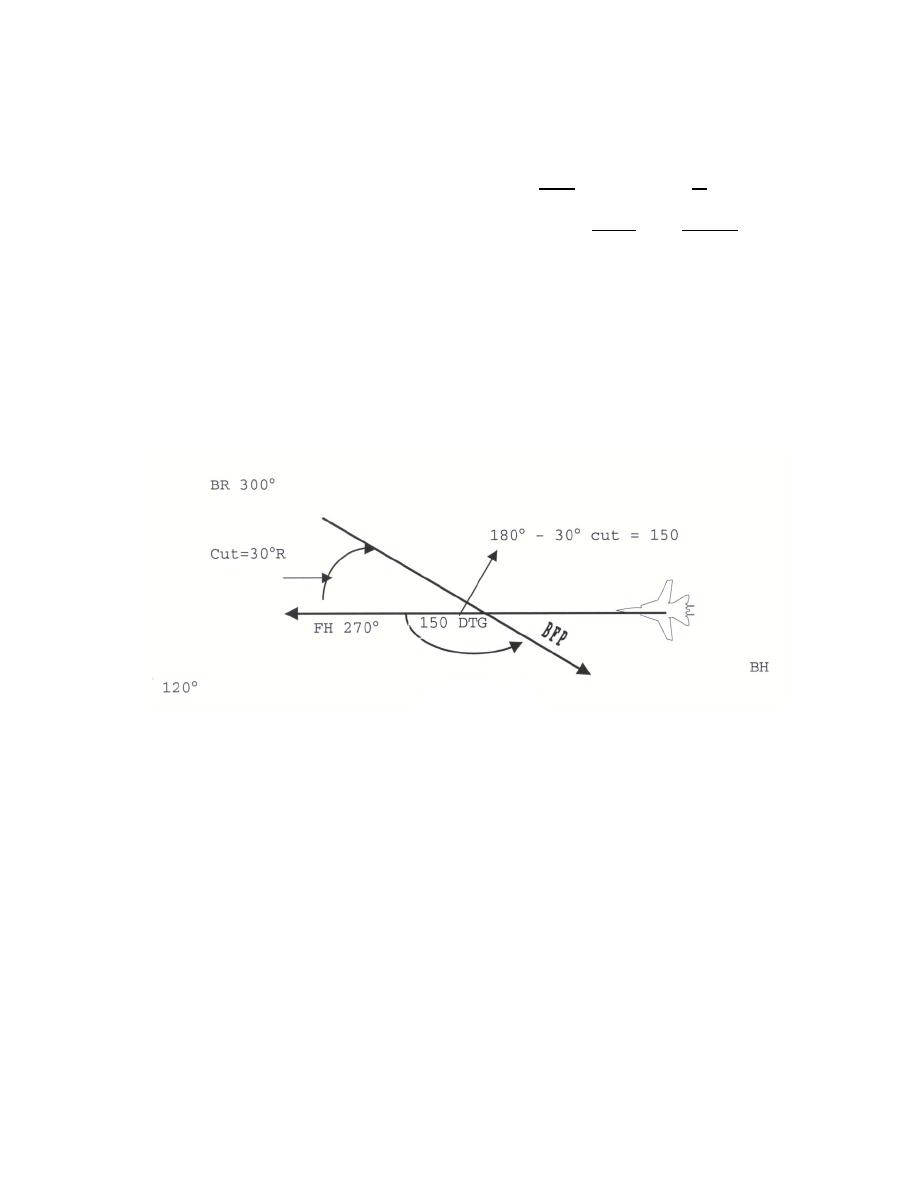 |
|||
|
|
|||
|
|
|||
| ||||||||||
|
|  INTERCEPT PROCEDURES TEXTBOOK
Cut Defined
Once aircrew have determined the proper fighter heading, they may also determine the
orientation of the bogey and fighter flight paths. The angle from fighter heading to bogey
reciprocal is defined as the cut. This is the angle at which the two flight paths intersect. It must
The direction of pass (DOP) is the direction the bogey would pass from one side of the
fighter's flight path to the other. The direction of pass alone makes no implications of where
the bogey and fighter are located along their flight paths, but simply gives a direction to the
bogey's flight path expressed relative to the fighter's flight path. Therefore, the DOP is
called as a right-to-left or a left-to-right pass.
Figure 5 provides an example of a right-to-left pass, indicating that the bogey's flight path is
oriented such that the bogey would come from the right of the fighter's flight path and pass to the
left of it.
Figure 5
DTG Defined
Degrees-to-go (DTG) is the shortest number of degrees the fighter needs to turn to parallel the
bogey's flight path, or turn to the bogey's heading. Because the DTG and cut form a straight line
(the bogey's flight path), their sum equals 180. The recommended procedure for computing
DTG is to subtract the cut from 180.
Target Aspect and Aspect Angle Defined
Target Aspect (TA) is the line of sight angle from the target's nose to the fighter (how the
bogey sees the fighter). It is analogous to the fighter's Angle-Off. It is measured in direction
right or left of the target's flight path.
Aspect Angle (AA) is the angle from the bearing line of the fighter to the tail of the target. It
is also measured in direction right or left of the target's flight path.
22
|
|
Privacy Statement - Press Release - Copyright Information. - Contact Us |